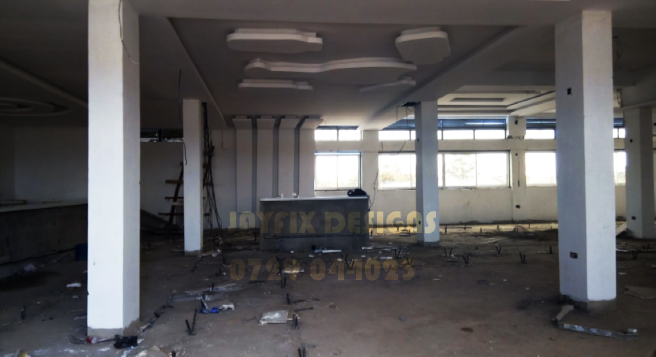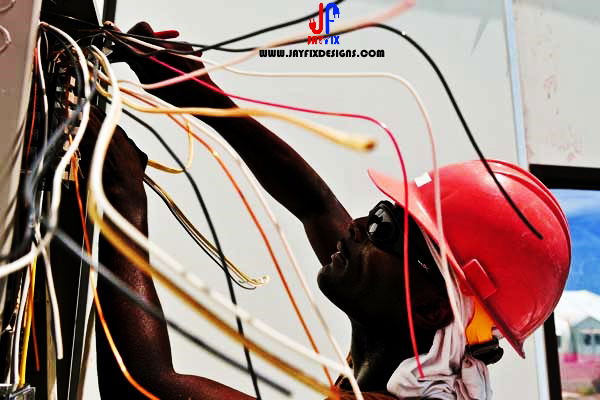
We provide High Quality Services to our clients. This is made possible by our Experienced and highly trained Electrical Engineers, who work tirelessly to ensure that the projects meet deadlines and are completed competently.
The electrical bracket covers ;
(A) NORMAL ELECTRICAL INSTALLATION.
1) System preparation
Electrical System Preparations & Piping: Ensuring Safety and Efficiency Before Installation
Introduction
Electrical installations are the backbone of modern infrastructure, powering our homes, businesses, and industries. The seamless functioning of these installations depends on careful planning, precise preparations, and adherence to safety standards. One crucial aspect of this process is electrical piping and system preparations. We delve into the essential steps and precautions necessary before the installation of electrical systems, emphasizing the importance of safety, compliance, and efficiency.
Understanding Electrical Piping
Electrical piping, often referred to as conduits, serves as protective pathways for electrical wires. These conduits safeguard the wires from physical damage and environmental factors, ensuring a longer lifespan for the electrical system. Before installation begins, a thorough assessment of the building layout is imperative. Proper placement of conduits is essential, taking into account factors such as load requirements, convenience, and future expansion possibilities.
Pre-Installation System Preparations
Load Analysis: The first step in system preparations involves a meticulous analysis of the electrical load requirements. This includes calculating the power needs of lighting, appliances, machinery, and other devices that will be connected to the system. Accurate load calculations prevent overloading, which can lead to system failures or even fire hazards.
Regulatory Compliance: Familiarity with local and national electrical codes is non-negotiable. Compliance with these regulations ensures the safety of occupants and property.We obtain the necessary permits and approvals from relevant authorities, demonstrating that the installation meets all legal requirements.
Safety First: Safety is paramount in any electrical installation. Adequate safety gear, including gloves, goggles, and insulated tools, must be provided to personnel. Implement stringent lockout/tagout procedures to prevent accidental power supply during installation.
Choosing the Right Conduits: Selecting conduits of the correct material and size is vital. Factors such as the environment (indoor or outdoor), the presence of corrosive substances, and the load capacity should influence your choice. High-quality conduits ensure the longevity and reliability of the electrical system.
Grounding: Proper grounding is a fundamental aspect of electrical safety. Establish a robust grounding system, connecting all conduits to the ground to prevent electrical faults and ensure the safety of the installation.
Documentation and Future Readiness
Accurate documentation is crucial for the long-term maintenance and future upgrades of the electrical system. As-built drawings detailing the layout of conduits, wiring, and electrical components provide invaluable reference for maintenance personnel. Additionally, we prepare operation and maintenance manuals for the installed equipment, aiding in troubleshooting and repairs.
Conclusion
Electrical piping and system preparations are the foundational steps upon which a reliable and safe electrical installation is built. By meticulously analyzing loads, ensuring regulatory compliance, prioritizing safety, choosing high-quality conduits, and maintaining detailed documentation, the groundwork for a robust electrical system is laid. These preparations not only enhance the efficiency of the installation but also guarantee the safety of occupants and the protection of valuable assets. Remember, investing time and effort in meticulous preparations today can prevent numerous challenges and hazards in the future, ensuring a smooth and uninterrupted power supply for years to come.
2) Electrical path creation( piping)


3) Electrical cabling
Electrical Cabling and Fitting: Ensuring a Safe and Efficient Power Infrastructure
Introduction
In our days, where electricity powers almost every aspect of our lives, ensuring a safe and efficient electrical cabling and fitting system is paramount. From homes to businesses, the proper installation of electrical cables and fittings is crucial for the seamless functioning of appliances and devices. We explore the significance of electrical cabling and fitting, highlighting the essential components and best practices necessary for a reliable power infrastructure.
Understanding Electrical Cabling
Electrical cables are the lifelines of any building's electrical system, carrying power from the source to various outlets and devices. They come in different types, including insulated wires, coaxial cables, and fiber optics, each designed for specific applications. Before installation, careful consideration must be given to the type of cable required based on factors such as load, environment, and safety regulations.
Essential Components of Electrical Cabling:
Conductors: Conductors are the core elements of electrical cables, usually made of copper or aluminum. Copper is preferred for its high conductivity and durability, ensuring minimal energy loss during transmission.
Insulation: Insulation materials surround the conductors, preventing electrical leakage and ensuring safety. Common insulating materials include PVC, rubber, and thermoset materials, each suitable for specific applications and environments.
Sheath: The outer sheath protects the cable from physical damage, moisture, and environmental factors. It enhances the cable's durability and longevity, making it suitable for both indoor and outdoor use.
Importance of Proper Fittings:
Electrical fittings include various components such as outlets, switches, junction boxes, and sockets. Proper fittings are essential for the safety and functionality of the electrical system. Quality fittings not only ensure a secure connection but also prevent electrical faults, reducing the risk of fire hazards and ensuring the longevity of the system.
Best Practices in Electrical Cabling and Fitting:
Professional Installation: Electrical cabling and fitting should be performed by licensed professionals who understand local regulations and safety standards. Professionals can ensure the correct selection of cables and fittings, preventing issues related to overloading and mismatched components. We strongly advise you to consider consulting an expert before purchasing installation components.
Load Calculation: Accurate load calculation is fundamental. It helps determine the appropriate cable size and type, preventing overloading and ensuring efficient power distribution. For us to make an accurate calculation, you need to let us know your usage extent.
Proper Insulation: Using cables with the correct insulation rating is crucial, especially in environments where moisture and other corrosive elements are present. Proper insulation prevents short circuits and electrical failures.
Regular Inspections: Periodic inspections of electrical fittings and cables are essential to identify signs of wear, damage, or aging. Timely replacements and repairs can prevent electrical failures and accidents. We offer time to time inspections at a very affordable price.
Safety Measures: Implement safety measures such as circuit breakers, surge protectors, and ground fault circuit interrupters (GFCIs) to safeguard against electrical faults, ensuring the safety of occupants and property.
Conclusion
Electrical cabling and fitting are the ultimate indicators of the well being of any electrical system, ensuring the reliable and safe distribution of power. By understanding the importance of proper cables, fittings, and installation practices, we can create a power infrastructure that not only meets your energy needs but also prioritizes safety and efficiency. Investing in high-quality cables, professional installations, and regular maintenance is not just a matter of convenience; it is a commitment to the well-being and security of everyone who relies on the power supply. By adhering to best practices and industry standards, we can create a future where electrical systems are not only functional but also safe, sustainable, and dependable.


4)Electrical fittings


5)Electrical repairs and diagnostics
Electrical Diagnostics,Repairs and Maintenance: Ensuring Safety and Longevity
Introduction
As we know, electricity is very important in our day to day life. However, with this convenience comes the responsibility of ensuring that our electrical systems are well-maintained and promptly repaired when necessary. Electrical repairs and maintenance play a vital role in ensuring the safety of occupants and the longevity of the electrical systems. We explore the significance of regular maintenance and timely repairs in safeguarding our electrical systems.
The Importance of Regular Maintenance
Regular maintenance of electrical systems is akin to preventive healthcare for your home or business. It involves scheduled inspections, cleaning, and testing of various components to identify and address potential issues before they escalate. Here's why regular maintenance is crucial:
Safety First: Electrical faults are a leading cause of fires and accidents. Regular maintenance helps identify faulty wiring, damaged appliances, or outdated components, preventing potential hazards and ensuring the safety of occupants.
Improved Efficiency: Well-maintained electrical systems operate more efficiently. Clean, properly connected components reduce energy wastage, leading to lower utility bills and a smaller environmental footprint.
Prolonged Lifespan: Regular maintenance ensures that electrical appliances and systems are functioning within their optimal parameters. This extends their lifespan, saving you money on premature replacements.
Compliance and Peace of Mind: Regular maintenance ensures that your electrical systems comply with safety regulations and codes. It also provides peace of mind, knowing that your home or business is protected against electrical mishaps.
Common Electrical Repairs
Even with regular maintenance, electrical systems can experience wear and tear over time. Timely repairs are essential to address issues promptly and prevent further damage. Some common electrical repairs include:
Fixing Faulty Wiring: Over time, wiring can deteriorate, leading to frayed or exposed wires. Repairing or replacing faulty wiring is crucial to prevent short circuits and fires.
Replacing Outdated Components: Outdated electrical components such as circuit breakers, switches, and outlets might not meet current safety standards. Replacing them ensures a safer electrical system.
Addressing Overloaded Circuits: Overloaded circuits can cause circuit breakers to trip frequently. Proper repairs, including redistributing loads or upgrading circuits, prevent interruptions in power supply.
Repairing Electrical Appliances: Malfunctioning appliances can cause electrical issues. Prompt repairs ensure that faulty appliances do not damage the electrical system further.
DIY vs. Professional Repairs
While minor electrical repairs might tempt homeowners to attempt a do-it-yourself approach, it's essential to recognize the limitations of amateur repairs. Electrical work can be dangerous and complex. DIY repairs can lead to accidents, damage to property, or even violate local electrical codes. For safety and efficiency, it is advisable to hire licensed electricians for all electrical repairs and installations.
Conclusion
Electrical repairs and maintenance are not just tasks; they are responsibilities that ensure the safety, efficiency, and longevity of our electrical systems. By investing in regular maintenance and promptly addressing repairs, we create environments that are not only functional but also secure for everyone. Whether it's a flickering light, a faulty outlet, or a complete electrical overhaul, timely repairs and proactive maintenance are key to a reliable and safe electrical infrastructure. Let's prioritize the health of our electrical systems, ensuring they continue to power our lives without compromise.



6) Electrical maintenance

(B) DECORATIVE ELECTRICAL INSTALLATION.
Setting the Stage: The Art of Decorative Lighting in Diverse Spaces
Introduction
Lighting is a powerful tool that can transform the ambiance of any space, turning the ordinary into the extraordinary. In environments like nightclubs, recreation centers, gaming halls, movie theaters, restaurants, beauty parlors, homes, and office areas, decorative lighting plays a pivotal role in creating immersive experiences, enhancing aesthetics, and influencing moods. Let's dive into the creative and functional aspects of decorative lighting, showcasing how innovative lighting designs elevate diverse spaces.
1.) NIGHT CLUBS AND RE-CREATION CENTERS:
"Where Vibrancy Meets Energy"
In nightclubs and recreation centers, lighting is not just about visibility; it's about setting the mood for a night of excitement and entertainment. LED strips, neon signs, and dynamic strobe lights sync with the rhythm, creating pulsating beats of color that dance to the music. Moving head lights and lasers add drama, transforming these spaces into energetic, visually stimulating environments that keep patrons on their feet.


2.) GAMING HALLS AND MOVIE THEATERS:
GAMING HALLS:
"Enhancing Focus and Concentration"
In gaming halls, especially casinos, lighting is strategically designed to enhance focus and concentration. Soft, ambient lighting is combined with spotlighting on gaming tables, accentuating the games while maintaining a cozy atmosphere. Indirect lighting under counters and behind machines adds depth, creating an aura of suspense and sophistication that complements the gaming experience.
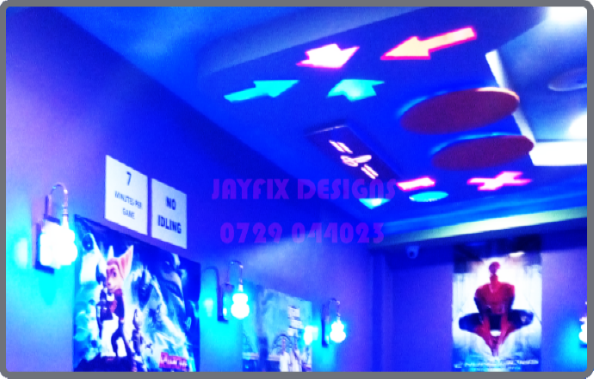
MOVIE THEATERS:
"Crafting Cinematic Atmosphere"
In movie theaters, lighting is about creating a cinematic atmosphere that immerses the audience in the magic of the big screen. Dimmable, soft lights along the aisles guide moviegoers without disturbing the movie-watching experience. Fiber optic starry ceilings mimic the night sky, enhancing the sense of wonder during intermissions, turning the theater into a galaxy of dreams.

3.) RESTAURANTS AND BEAUTY PARLORS:
"Dining in Ambiance, Pampering in Luxury"
In restaurants, lighting sets the mood for fine dining. Warm, ambient lighting paired with decorative pendant lights over tables creates an intimate, cozy atmosphere. In contrast, beauty parlors often utilize bright, white task lighting for precision during treatments. Stylish chandeliers and mirror lights add a touch of elegance, making these spaces as aesthetically pleasing as they are functional.


4.) HOME AND OFFICE AREAS:
HOMES:
"Personalizing Spaces with Light"
In homes, decorative lighting is a form of self-expression. From statement chandeliers in the foyer to under-cabinet lighting in kitchens, each fixture is carefully chosen to complement the interior design. Smart lighting systems allow homeowners to adjust colors and intensity, transforming spaces to match their mood or occasion. Decorative lighting in homes is not just functional; it's an art form that reflects personal taste and style.


OFFICE AREAS:
"Enhancing Productivity and Creativity"
In modern office spaces, lighting goes beyond functionality; it influences productivity and creativity. Natural light is harnessed wherever possible, promoting a sense of well-being. Task lighting at workstations reduces eye strain, while ambient lighting in common areas fosters collaboration. Dynamic, color-changing LEDs in creative spaces encourage out-of-the-box thinking, enhancing the innovative spirit of the workplace.
(C) STAGE LIGHTING INSTALLATION.
Illuminating Brilliance: The Art and Science of Stage Lighting
Introduction
In the realm of live performances, stage lighting is the unsung hero, enhancing the visual spectacle and creating an emotional connection between performers and the audience. The art of stage lighting is a meticulous blend of creativity, technology, and precision, shaping the atmosphere, guiding emotions, and bringing performances to life. We explore the multifaceted world of stage lighting, shedding light on its significance and the intricate techniques involved.
The Essence of Stage Lighting
At its core, stage lighting is about capturing the essence of a performance, whether it's a theatrical play, a music concert, a dance recital, or a live event. It transcends mere illumination, becoming a dynamic medium that conveys mood, time, place, and even character development. By manipulating color, intensity, direction, and movement, our lighting designers create an immersive visual experience, captivating the audience's senses and enhancing the overall impact of the performance.
Key Elements of Stage Lighting
Color Palette: Our lighting designers use a diverse range of colors to evoke specific emotions and ambiance. Warm tones like reds and oranges convey intimacy and passion, while cool blues and greens create a sense of calm or mystery. Rapid changes in color can signify transitions or intense moments within a performance.
Intensity and Focus: The intensity of light can draw attention to specific elements on the stage. Spotlighting emphasizes individual performers, while broader washes provide overall illumination. Additionally, the focus of light determines the clarity and sharpness of the illuminated area, adding depth and dimension to the stage.
Movement and Effects: Moving lights and special effects, such as gobos (stencils placed in front of lights to create patterns) and strobes, add dynamic visual elements. Moving lights can create kinetic patterns and follow performers' movements, enhancing the sense of energy and excitement during live shows.
Contrast and Shadow: Play of light and shadow adds depth and drama to the stage. Contrasting areas of brightness and darkness create visually striking compositions, emphasizing facial expressions, gestures, and stage props.
The Technical Marvel Behind Stage Lighting
Behind the enchanting visuals lies a complex system of technology and equipment. Modern stage lighting relies heavily on intelligent lighting fixtures, LEDs, and sophisticated control systems. Lighting designers collaborate with electrical engineers and technicians to install and program intricate setups, ensuring seamless transitions and precise synchronization with the performance.
The Impact on Performances
Stage lighting is not just a visual embellishment; it profoundly influences the audience's emotional response. A well-lit stage can elevate a performer's charisma, intensify the narrative, and create memorable moments etched in the minds of spectators. It also fosters a sense of connection, forging a symbiotic relationship between performers and their audience.
Conclusion
Stage lighting is an indispensable art form, enriching live performances and transforming ordinary stages into captivating, magical realms. It combines creativity, technical expertise, and a deep understanding of human emotions to craft immersive experiences. As technology advances, the boundaries of what can be achieved with stage lighting continue to expand, promising even more awe-inspiring spectacles in the world of entertainment. With each meticulously orchestrated play of light and shadow, stage lighting remains a testament to the limitless creativity of human expression, proving that illumination can indeed be transformative, transcendent, and truly electrifying.
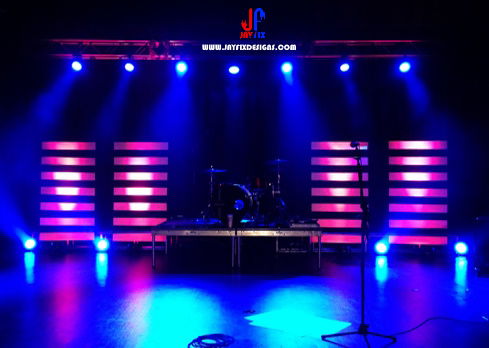
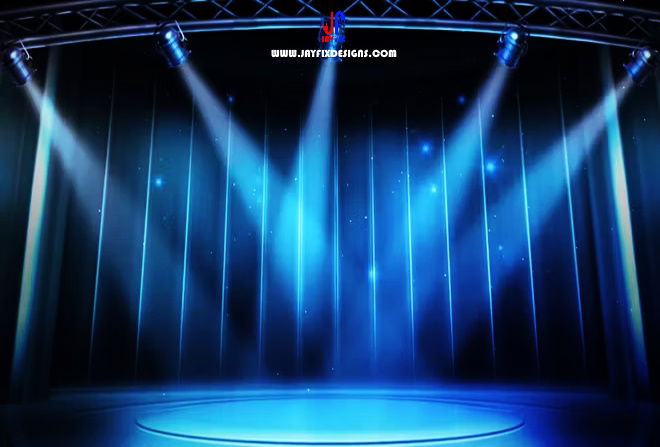
(D) SOLAR SYSTEM INSTALLATION.
Harnessing the Sun: Solar System Installation.
Introduction
In recent years, Kenya has emerged as a trailblazer in renewable energy, particularly in solar power. With abundant sunlight throughout the year, the country has recognized the potential of solar energy to address its energy needs, promote sustainability, and reduce dependency on fossil fuels that have spiked an increase in the cost of living. Lets explore the transformative journey of solar system installation in Kenya, shedding light on the benefits, challenges, and the remarkable progress made in the renewable energy sector.
The Solar Revolution in Kenya
Kenya's geographical location near the equator blesses it with consistent and strong sunlight, making it an ideal candidate for harnessing solar energy. The Kenyan government, in collaboration with private enterprises, international organizations and construction stakeholders like JAYFIX DESIGNS has taken significant strides in promoting solar power installations across the country. From rural households to urban businesses, solar systems have become increasingly accessible and affordable, empowering communities and driving economic growth.
Benefits of Solar System Installation
Clean and Sustainable Energy: Solar power is renewable and environmentally friendly, producing no greenhouse gas emissions or air pollutants. By harnessing the sun's energy, Kenya reduces its carbon footprint and mitigates the effects of climate change.
Energy Access and Rural Electrification: Solar installations have brought electricity to remote and off-grid areas, improving the quality of life for millions of Kenyans. It has enabled children to study after dark, empowered small businesses, and enhanced healthcare services in rural clinics.
Job Creation: The solar industry has generated employment opportunities, from manufacturing solar panels to installation and maintenance services. This not only boosts the economy but also enhances the skill set of the workforce.
Cost-Effectiveness: Solar energy reduces electricity bills significantly over time. With advancements in technology and government incentives, the initial investment in solar installations has become more affordable, making it an economically viable choice for both households and businesses.
Challenges and Solutions
While Kenya's solar revolution has been remarkable, challenges still exist. These challenges include initial installation costs, intermittent energy storage, and the need for continued investment in infrastructure and education. However, ongoing efforts by the government, NGOs, and private sectors are addressing these challenges through innovative financing models, research, and community engagement programs. Moreover, technological advancements, such as efficient battery storage solutions, are enhancing the reliability of solar power systems, making them more accessible and dependable. We at JayFix Designs have a 10% discount for all solar installation and sales running since 2022. The offer is expected to run for five years.
Conclusion
Solar system installation in Kenya stands as a beacon of sustainable development and innovation. The country's progress in harnessing solar energy not only illuminates homes and powers businesses but also illuminates the path toward a greener, more sustainable future. With a commitment to renewable energy, Kenya serves as an inspiring example for the world, showcasing the transformative power of solar installations in fostering economic growth, environmental stewardship, and social progress. As the solar revolution continues to unfold, Kenya's journey serves as a testament to the limitless potential of renewable energy in shaping a brighter tomorrow.



When contracted, we do the Electrical project planning, prepare a work schedule,generate all system drawings ( if none exist ).
We also provide High Quality Electrical and Solar Materials to our clients, at a pocket friendly price.
"TRY US TODAY AND YOU WILL EXPERIENCE A TOTAL VALUE FOR YOUR MONEY"

